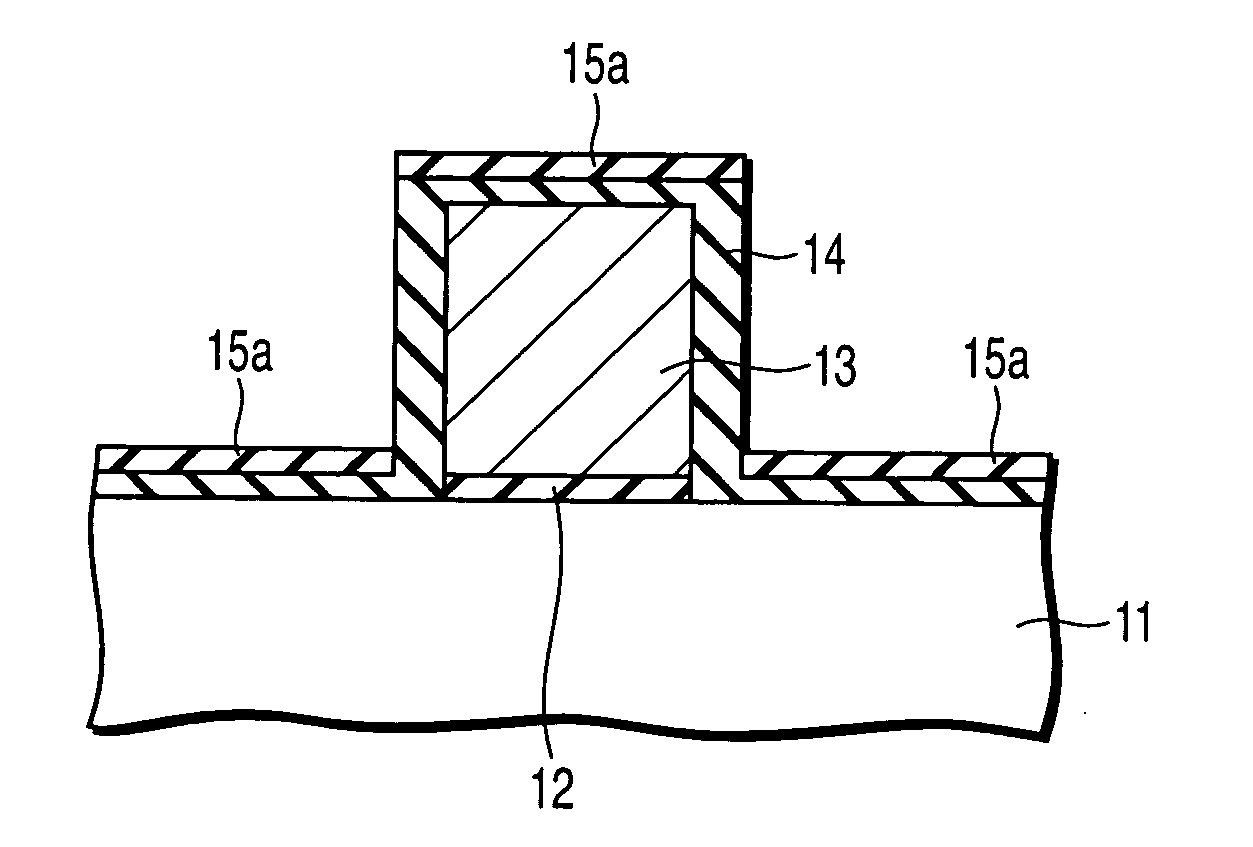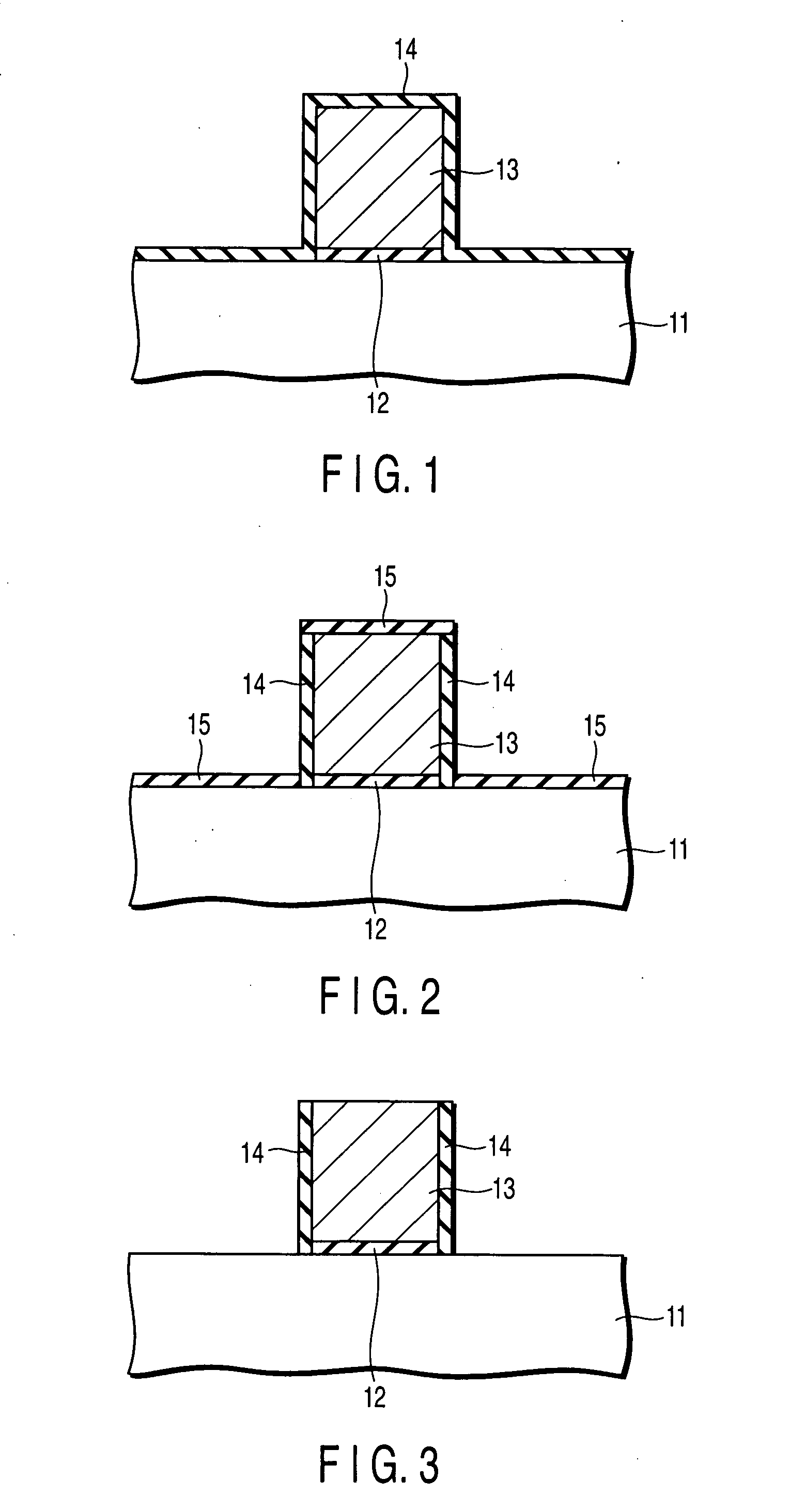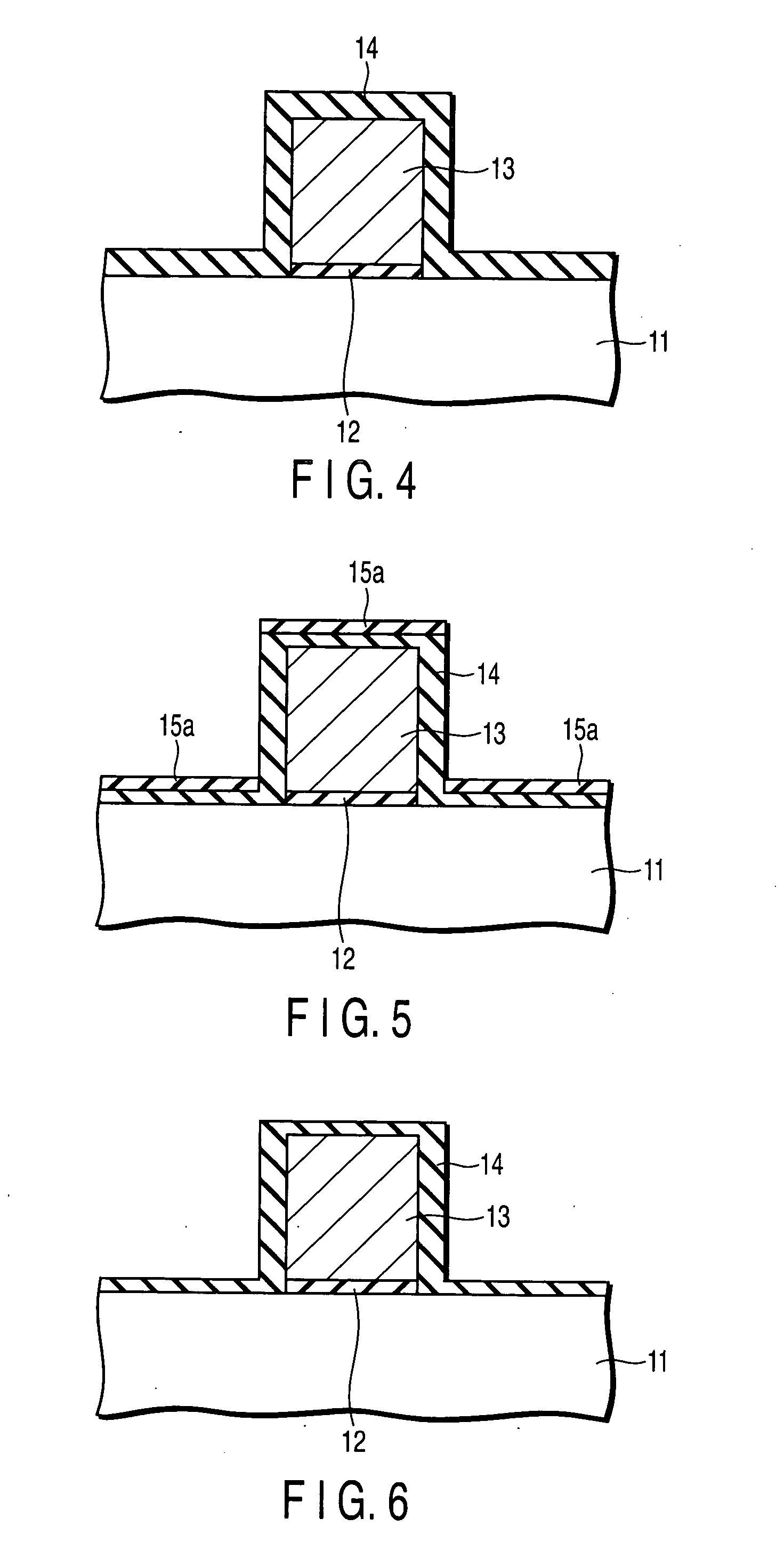Method of manufacturing semiconductor device
a manufacturing method and semiconductor technology, applied in the direction of semiconductor devices, basic electric elements, electrical appliances, etc., can solve the problems of inability to ensure the processing accuracy of sidewall spacers, inability to have vertical profiles of sidewall spacers, tapered sidewall spacers,
- Summary
- Abstract
- Description
- Claims
- Application Information
AI Technical Summary
Problems solved by technology
Method used
Image
Examples
embodiment 1
[0024] A semiconductor device manufacturing method according to a first embodiment of the invention will be described with reference to sectional views shown in FIGS. 1, 2 and 3.
[0025] First, as shown in FIG. 1, a silicon substrate (semiconductor substrate) 11 is formed on top with a gate insulating film 12 and a gate electrode (gate interconnect line) 13 is formed on the gate insulating film as a gate structure. The gate insulating film 12 is formed of silicon oxide and the gate electrode 13 is formed of polysilicon. Although the gate insulating film 12 is shown here processed into the shape of gate together with the gate electrode 13, it may be left unprocessed to cover the entire major surface of the silicon substrate 11. Subsequently, a spacer insulating film (first insulating film) 14 having a thickness of 10 nm and formed of silicon nitride is formed so as to cover the surface (top and side surfaces) of the gate electrode 13 and the surface (major surface) of the silicon subs...
embodiment 2
[0030] A semiconductor device manufacturing method according to a second embodiment of the invention will be described with reference to the sectional views shown in FIGS. 1, 2 and 3.
[0031] First, as shown in FIG. 1, as in the first embodiment, a silicon substrate (semiconductor substrate) 11 is formed on top with a gate insulating film 12 and then a gate electrode (gate interconnect line) 13 is formed on the gate insulating film. Subsequently, a spacer insulating film (first insulating film) 14 is formed so as to cover the surface (top and side surfaces) of the gate electrode 13 and the surface (major surface) of the silicon substrate 11. In this embodiment, the spacer insulating film 14 is a silicon oxide film of 10 nm in thickness.
[0032] Next, as shown in FIG. 2, an anisotropic nitrogen (N2) plasma process is carried out using the same type of plasma processing apparatus as in the first embodiment. Since this nitrogen plasma process is also anisotropic as with the oxygen plasma...
embodiment 3
[0035] A semiconductor device manufacturing method according to a third embodiment of the invention will be described with reference to the sectional views shown in FIGS. 1, 2 and 3.
[0036] First, as shown in FIG. 1, as in the first embodiment, a silicon substrate (semiconductor substrate) 11 is formed on top with a gate insulating film 12 and then a gate electrode (gate interconnect line) 13 is formed on the gate insulating film. Subsequently, a spacer insulating film (first insulating film) 14 is formed so as to cover the surface (top and side surfaces) of the gate electrode 13 and the surface (major surface) of the silicon substrate 11. In this embodiment, the spacer insulating film 14 is silicon nitride and has a thickness of 10 nm.
[0037] Next, as shown in FIG. 2, an anisotropic argon (Ar) plasma process is carried out using the same type of plasma processing apparatus as in the first embodiment. Since the argon plasma process is also anisotropic, Ar ions are supplied from a di...
PUM
 Login to View More
Login to View More Abstract
Description
Claims
Application Information
 Login to View More
Login to View More - R&D
- Intellectual Property
- Life Sciences
- Materials
- Tech Scout
- Unparalleled Data Quality
- Higher Quality Content
- 60% Fewer Hallucinations
Browse by: Latest US Patents, China's latest patents, Technical Efficacy Thesaurus, Application Domain, Technology Topic, Popular Technical Reports.
© 2025 PatSnap. All rights reserved.Legal|Privacy policy|Modern Slavery Act Transparency Statement|Sitemap|About US| Contact US: help@patsnap.com



